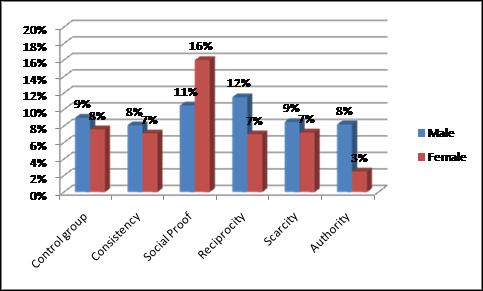Stephan Ludwig
The new popularity of online research communities is well justified. They have tremendous potential to gather consumer opinions and offer companies a chance to collaborate with their customers over the long term. But their effectiveness depends on a critical mass of signups, and many fail because they simply don’t see enough traffic when they launch.
It follows that the initial invitation to sign up to a community is crucial to persuading consumers to participate. So many researchers are asking themselves how they can make a more persuasive appeal to potential members.
Some research we did recently gave striking results and provides researchers with a way forward. It showed that the wording of the invitation to join a community counts for a great deal, and that researchers should consider adopting different styles of message depending on the type of person they are trying to attract.
In sum, we took five of Dr Robert Cialdini’s six techniques of persuasion (his “weapons of persuasion”) and applied them to five different signup invitations, with the aim of finding out which would result in the greatest number of new participants to a research community.
The techniques we chose were consistency, reciprocity, social proof, authority and scarcity.
We sent the messages to 6,000 members of our TalkToChange consumer panel and observed how effective they were among different genders and age groups.
Among the key findings of our subsequent analysis, we discovered that:
● Young people are heavily influenced by peer pressure, and are more likely to be persuaded to join a community if the persuasive message employs social proof.
● Social proof also worked best for the female cohort – by a long way. 16% of signups were accounted for by this technique; whereas the appeal to authority was much less successful (it persuaded only 3% of women to join).
● The message based on authority was most persuasive for the older group, accounting for 11% of signups compared to only 4% for those under 29.
● There was a marked difference in persuasive effect of reciprocity on men and women. The message framing membership as an opportunity to take part in dialogue, air your opinion and get feedback from peers resulted in 12% of signups among men but only 7% among women.
What does this mean for researchers planning communities?
Simply that the wording of your invitation to participate really matters. By applying the right persuasive technique to the segment you are interested in, you can boost participation from the outset and get your community off to a flying start.
Furthermore, the figures show that social proof is the most effective method across a group in which genders and ages are mixed. If you can show that a number of peers have already taken the decision to act, you can offer potential participants a persuasive incentive to sign up.


Stephan Ludwig studied a Bachelor of Business Science at the University of Cape Town. He graduated with a Master of Science in International Business at the Maastricht University, in August 2008. As of September 1st 2008 he works as a Ph.D. Candidate at the department of Marketing of the University Maastricht. His PhD is sponsored by InSites Consulting, where he collaborates with the R&D department.


